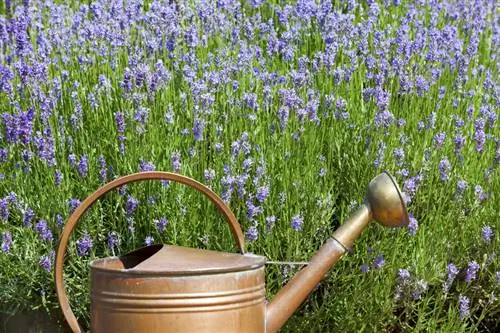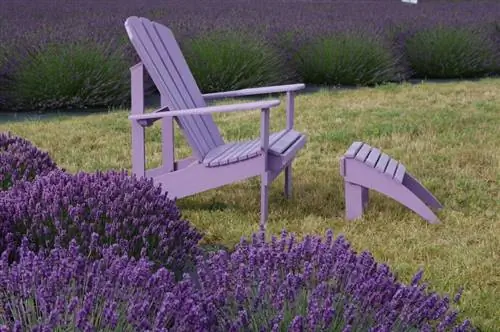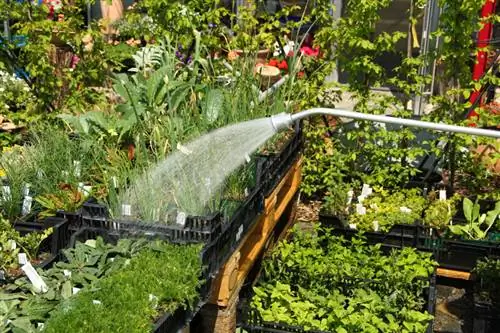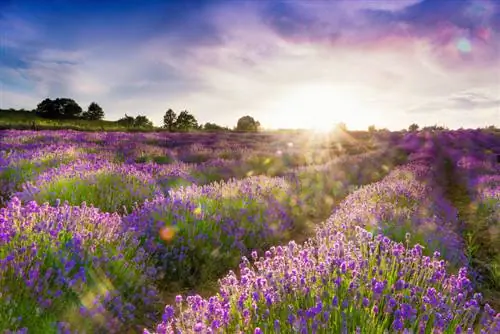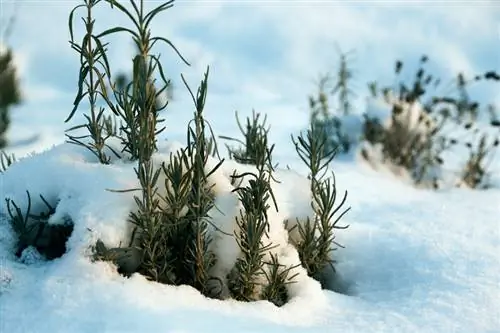- Author admin [email protected].
- Public 2023-12-16 16:46.
- Last modified 2025-01-23 11:20.
The real lavender, which grows up to 100 centimeters high, not only looks good in the garden with its purple or blue flowers, but is also traditionally used as a medicinal and spice plant. However, it should not be confused with the Lavandin (Lavandula intermedia) or the Hohen Speik (Lavandula latifolia).
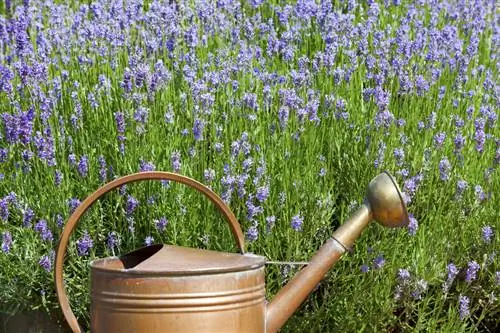
How do I care for real lavender properly?
Real lavender requires a sunny, poor location, tolerates drought and should only be watered and fertilized sparingly. Pruning takes place in spring and after flowering. Pot drainage is important for container storage, and hardy varieties need protection from moisture in winter.
Which location is the right one?
Since real lavender has its home in the Mediterranean countries, it also prefers a location that is as sunny and poor as possible.
How often does real lavender need to be watered?
The real lavender tolerates drought very well and therefore only needs to be watered when the substrate is already completely dry. Waterlogging must be avoided at all costs.
Do I have to fertilize the real lavender regularly?
You should also be very economical with fertilizer for real lavender, as the plant is adapted to very poor soils. In particular, fertilization containing very nitrogen, for example horn shavings or manure, should be avoided.
When should you cut the real lavender?
The real lavender becomes woody over time and then tends to become bald. For this reason, it should be cut back heavily in early spring and again after flowering. However, you should not cut into the old wood because it will be difficult for lavender to sprout again.
What needs to be paid special attention to when keeping a container?
When cultivating in a pot, waterlogging is a particular problem, so good pot drainage should always be ensured (for example using clay granules (€19.00 at Amazon) or similar).
Is real lavender hardy?
Basically, Lavandula angustifolia is less susceptible to frosty temperatures than the other lavender species. Many modern varieties have already been selected for winter hardiness and can therefore overwinter outdoors
What should you consider when overwintering real lavender?
When overwintering outdoors, however, it is often not only the cold temperatures that are problematic, but also the humidity: in wet winters, the drought-loving lavender de facto rots, while especially in mild winters with temperatures around freezing point, there is a risk of Drying out is very high. Good protection makes sense early on, with fir or spruce branches being particularly suitable. Please do not mulch the plant as this will cause it to be too moist.
Tip
Traditionally, roses and lavender are often planted together, but the two plant species actually do not fit together due to their very different needs in terms of location and care.

